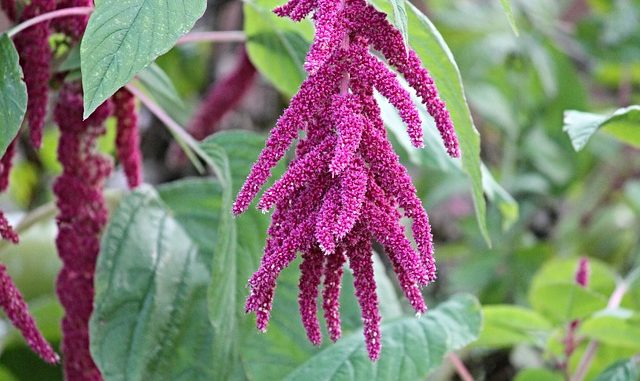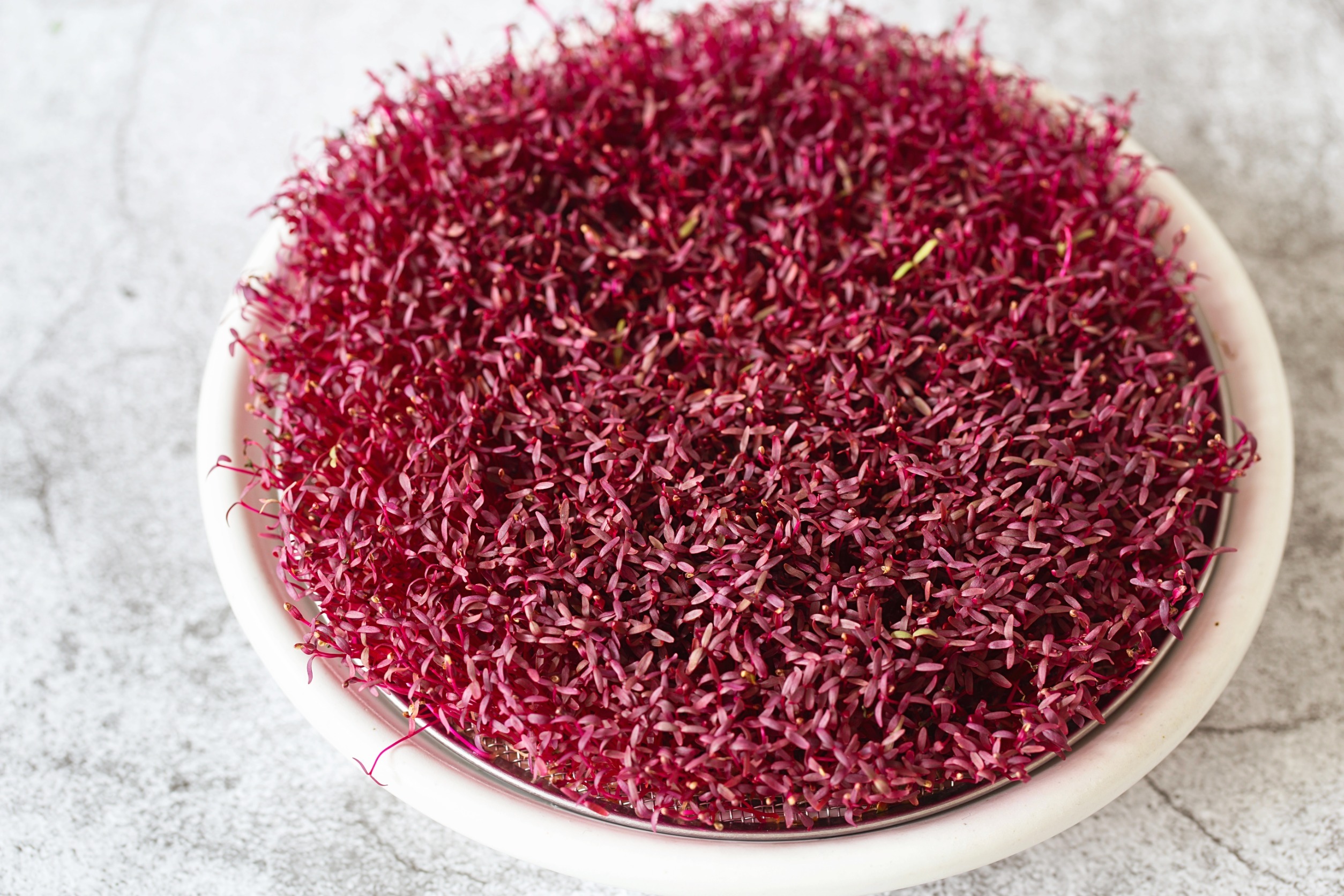
Amaranth is not only a great ornamental plant for the garden, it is also extremely nutritious and ideal for anyone adopting a gluten free diet. It is classified nowadays as a pseudocereal and is a superb source of protein, and as a leafy vegetable rivals spinach.
Back in history, amaranth was one of the staples of the Aztecs and before them, the Incas and Mayans. For those with coeliac issues, it is a valuable gluten-free alternative.
Using Amaranth In Cuisine
Amaranth is relatively straightforward to use as an ingredient in a various dishes. To most Westerners, amaranth is eaten as a grain but in Asia and the Far Eastern parts such as Thailand it is the spinach-like leaf that is preferred. That leaf is cooked everywhere and we would grow it as ‘Chinese Spinach” without realising it. The Thais call it pak kom jeen and they often stir-fry it or add the leaves to soups and stews. There is also a variant which is red-leaved and in Thailand this is known as kom bai dang or red-leaved spinach. You can also grow a thorny variety known as ‘Thorny spinach’ (pak kom naam) which may not sound appetising but would certainly be worth.
Recently, amaranth suddenly became a micro vegetable to be grown like cress. I would suggest you try it – the colour is outstanding in salads.

I feel that we in Europe sometimes miss a trick when it comes to using new leaves in our cooking. If we like chard, spinach and kale then there must be a place too for such a vegetable.
Look for the leaf in the wet markets of Asia.
Cooking Amaranth
Using Amaranth As A Grain
The best approach is to soak the seeds in water so they sprout about one to three days before use. Sprouting is a great way of making any grain easier to digest because the starches in the seeds are converted to sugars. It is a process very similar to malting of barley in many ways. It also helps in breaking down difficult to digest nutrients as well like phytate (Gupta et al., 2015).
To cook amaranth, simply add to cold water. Most chefs recommend level of about 1 part grain to either 3 or 4 parts of water. Boil and simmer for 20 to 25 minutes or when all the water has been absorbed.
Traditionally, amaranth is eaten as a porridge and it can be boiled as a porridge or side dish. We’ve tried amaranth in pasta or as a simple replacement for both rice, couscous and other grains. It works well in risotto and as a sprinkle in salads. The grain also works well in stews, broths and stews where it provides extra thickness and viscosity. You can find the grain in snack bars especially granola ones. The grain can also be added to muesli to supplement other grains, or provide texture for nuts, fruits etc.
The grain is also an alternative to quinoa because both retain their delicate and slightly nutty taste even on cooking where texture is a premium.
Amaranth is ideal as a source of fibre and also protein – use without sparing because it certainly has plenty of health properties. Amaranth flour is used in baked goods, especially for gluten-free purposes.
Cooking With The Leaf
As with many leafy vegetable such as spinach, I would try steaming as they do in Vietnam and Thailand. My niece recently tried this approach and the results were excellent. Well cooked but retaining that slightly succulent texture is a must with these types of vegetable.
To cook just throw the leaves into a colander over boiling water. The Thais, ever ones to value steam cooking, use the infamous maw nung which is basically a large stainless steel steamer that cooks everything from fish to pork. Check for ‘doneness’ by taking a leaf and seeing how well it crunches under the teeth.
Nutrition
A cup of amaranth (246 grams) when cooked provides about 9 grams of protein. The pseudocereal also contains plenty of minerals like magnesium, phosphorous, manganese and iron. Apparently, one cup provides over 100% of the daily intake of manganese. As we know, manganese is essential for good immunity and brain health.
References
Gupta, R.K., Gangoliya, S.S., Singh, N.K. (2015) Reduction of phytic acid and enhancement of bioavailable micronutrients in food grains. J. Food Sci., Technol. 52(2) pp. 676-684 (Article)
Leave a Reply